
In the ever-evolving world of automotive enthusiasts, certain vehicles command immediate reverence, gracing magazine covers and dominating auction blocks with their undeniable prestige. Yet, beneath the polished facade of mainstream icons lies a rich tapestry of mechanical ingenuity and driving passion: the underappreciated sports car. These are the machines that, for various reasons—be it market timing, unconventional engineering, or simply being overshadowed—never quite received the widespread adoration their engineering prowess and exhilarating performance truly deserved. They are the quiet achievers, the unsung heroes of asphalt, offering a depth of character that often surpasses their more celebrated contemporaries.
Our journey today ventures beyond the obvious, seeking out these hidden gems whose true value is only now being fully recognized by a new generation of discerning drivers and collectors. We’re talking about cars that, despite their inherent charm and formidable capabilities, were perhaps eclipsed by fleeting market trends, stringent production limitations, or simply a lack of effective marketing to convey their genuine appeal. For the true enthusiast, these vehicles present an unparalleled opportunity to connect with a purer form of motoring, where engagement and tactile feedback take precedence over the often-sterile perfection of modern, hyper-optimized engineering.
Indeed, this emerging appreciation for vehicles with distinct character, even those with “flaws” that demand greater driver involvement and active participation, signals a significant paradigm shift in what truly defines an enthusiast’s machine in an increasingly automated world. This in-depth exploration will reveal 15 such vehicles, each a testament to innovative design, audacious engineering, and truly compelling driving dynamics. From the high-revving symphony of a compact rotary engine to the balanced precision of a mid-engine layout, these cars offer a unique and engaging slice of automotive history, providing an immersive driving experience that stands in stark contrast to today’s homogenized offerings. Prepare to discover why these models, once relegated to the shadows, are now stepping into the spotlight as highly desirable and genuinely rewarding classics.

1. **Mazda RX-7 (FB/SA)**The first-generation Mazda RX-7, affectionately known by its chassis codes FB/SA, stands as a bold testament to engineering audacity, uniquely bringing the revolutionary rotary engine technology to a mainstream audience with remarkable success. This lightweight sports car delivered a driving experience that was genuinely distinct and profoundly engaging, carving out a significant niche in the performance landscape of its era. Its very existence challenged conventional piston-powered orthodoxy.
At the core of the FB/SA’s charismatic appeal was its diminutive yet potent 1.1L 12A rotary engine. This compact and inherently balanced power unit defied traditional expectations, defined by its astonishing ability to spin to incredibly high revs with a remarkable lack of vibration. The resulting power delivery was extraordinarily smooth and linear, fostering an intoxicating connection between driver and machine, offering a visceral thrill unlike any other internal combustion engine.
Beyond its unique engine, the FB/SA RX-7 boasted a meticulously engineered lightweight chassis, contributing significantly to its reputation for superb handling and dynamic agility. Its balanced weight distribution ensured a predictable ride, making it a joy to pilot on winding roads. This excellent dynamic package contributed to its notable successes in various forms of motorsports, cementing its legitimate performance credentials.
Despite its groundbreaking technology and affordable thrills, the FB/SA RX-7 often finds itself overshadowed by its more powerful and visually aggressive successors. This persistent oversight only serves to underscore its profound status as a genuine hidden gem for discerning enthusiasts. With its sleek, timeless design, which drew inspiration from classic European sports car aesthetics, the FB/SA offers an enduring appeal that continues to captivate today.
Car Model Information: 1989 Mazda RX-7
Name: Mazda RX-7
Caption: 1994 Mazda RX-7 R2 (FD3S)
Manufacturer: Mazda
Aka: Mazda Savanna RX-7 (Japan, 1978–1991),Mazda ɛ̃fini RX-7 (Japan, 1991–1997)
Class: Sports car
Production: 1978–2002,811,634 produced
Assembly: Hiroshima
Platform: Mazda F platform
Layout: Front-engine, rear-wheel-drive layout#Front mid-engine, rear-wheel-drive layout
Predecessor: Mazda RX-3
Successor: Mazda RX-8
Categories: 1980s cars, 1990s cars, 2000s cars, 24 Hours of Le Mans race cars, All Wikipedia articles written in British English
Summary: The Mazda RX-7 is a sports car which was manufactured and marketed by Mazda from 1978 to 2002 across three generations. It has a front mid engine, rear-wheel-drive layout and uses a compact and lightweight Wankel rotary engine.
The first-generation RX-7, codenamed SA (early) and FB (late), is a two-seater coupé with a rear hatchback. It featured a 12A carbureted rotary engine as well as the option for a 13B rotary engine with electronic fuel injection in later years. The second-generation RX-7, carrying the internal model code FC, was offered as a two-seater coupé with a 2+2 option available in some markets, as well as in a convertible body style. This was powered by the 13B rotary engine, offered in naturally aspirated or turbocharged forms. The third-generation RX-7, model code FD, was offered as a two-seater coupé with a 2+2 version offered as an option for the Japanese market. It featured a sequentially turbocharged 13B REW engine.
More than 800,000 RX-7s were manufactured over its lifetime.
Get more information about: Mazda RX-7
Buying a high-performing used car >>>
Brand: Mazda Model: RX-7
Price: $14,998 Mileage: 88,741 mi.

2. **Toyota MR2 (AW11)**From 1984 to 1989, Toyota offered something truly special and surprisingly exotic to the budget-conscious enthusiast: the MR2 AW11. This mid-engine, rear-wheel-drive sports car provided an exceptional driving experience, echoing the sophisticated layout of far more expensive European exotics but at a fraction of their cost. It represented a bold move for Toyota, showcasing their engineering prowess beyond mere reliability.
Powering the AW11 was the venerable 1.6L 4A-GE engine, a unit celebrated for its robust reliability and spirited performance. This specific powerplant, famously borrowed from the legendary AE86 Corolla, delivered a lively output of around 112 horsepower perfectly suited to the MR2’s lightweight and agile character. Its eager responsiveness and willingness to rev made every acceleration a rewarding experience.
The true magic of the AW11 MR2, however, lay in its sublime handling dynamics. Thanks to a meticulously engineered lightweight chassis and a mid-engine configuration granting an inherently low center of gravity, the car exhibited astonishing agility and responsiveness. It was a machine that communicated directly with its driver, translating every road surface nuance and steering input into an immediate, precise reaction, earning it the moniker of a true driver’s car.
Despite these remarkable capabilities and its unique mid-engine layout, the AW11 often finds itself overshadowed by more mainstream sports cars. This relative obscurity, however, only adds to its allure as an underappreciated classic. Its exceptional value, engaging dynamics, and the sheer joy it provides behind the wheel make it a secret kept by those who understand its true brilliance and engineering sophistication.
Car Model Information: 1993 Toyota MR2 Turbo
Name: Toyota MR2
Caption: Second generation MR2
Manufacturer: Central Motors
Aka: Toyota MR (France and Belgium)
Production: 1984–2007
Assembly: Sagamihara, Kanagawa
Class: Sports car
Layout: Rear mid-engine, rear-wheel-drive layout
ModelYears: 1985–2007
Categories: 1990s cars, 2000s cars, All Wikipedia articles written in American English, All articles containing potentially dated statements, All articles needing additional references
Summary: The Toyota MR2 is a two-seater sports car which was manufactured and marketed by Toyota from 1984 until 2007 over three generations. It was the first Japanese rear-mid-engine, rear-wheel-drive production car and was sold around the world. The first generation (W10) was produced from 1984 to 1989, the second generation (W20) from 1989 to 1999, and the third generation (W30) from 1999 to 2007.
Conceived as a small, economical and sporty car, the MR2 features a straight-four engine, transversely mounted in front of the rear axle, four-wheel disc brakes, and fully independent coilover suspension with MacPherson struts on each wheel.
The name MR2 stands for either “mid-ship run-about 2-seater” or “mid-engine, rear-wheel-drive, 2-seater”. In French-speaking markets, the vehicle was renamed Toyota MR because the abbreviation “MR2” sounds like the profanity “merdeux” when spoken in French.
Get more information about: Toyota MR2
Buying a high-performing used car >>>
Brand: Toyota Model: MR2
Price: $21,499 Mileage: 145,631 mi.
Read more about: Unearthing Gems: 15 Undervalued 1980s Sports Cars That Are Smart Buys for Collectors Today
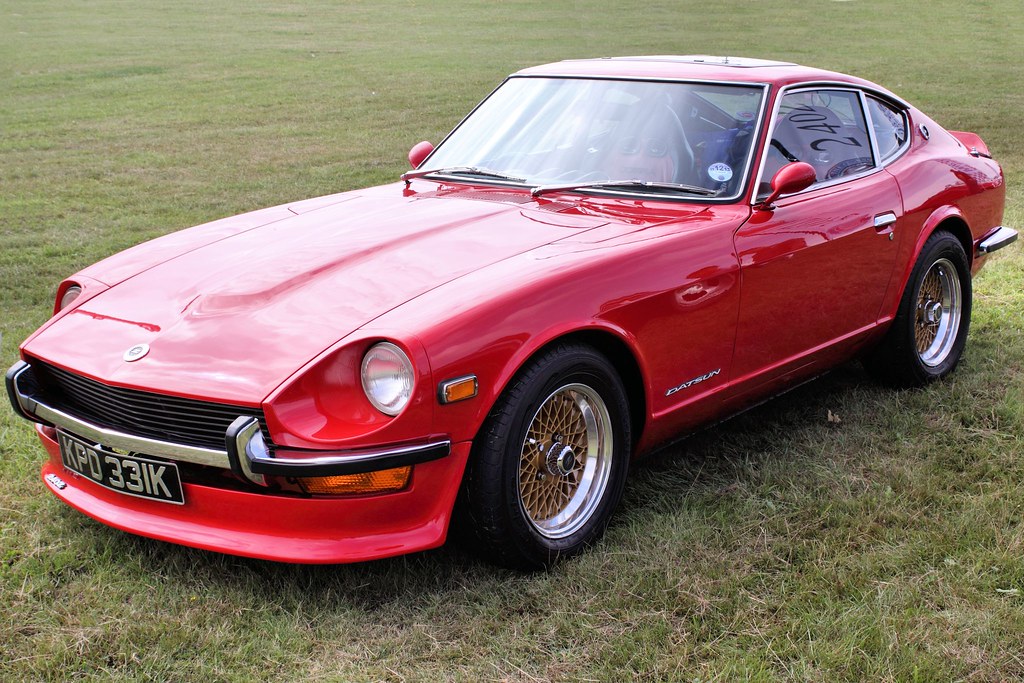
3. **Datsun 240Z**Introduced in 1969, the Datsun 240Z is widely lauded for democratizing the sports car, transforming a luxury niche into an attainable dream for the masses. While this accessibility is a significant part of its legend, the 240Z’s intrinsic qualities as a pure sports machine, and its rightful place as a bona fide classic, are sometimes surprisingly overlooked. It was a design revolution that brought performance, style, and reliability to a broader audience.
Underneath its long, flowing hood lay a potent 2.4L inline-six engine, an engineering marvel that delivered a robust 151 horsepower. This output allowed the 240Z to boast performance figures that directly challenged prestigious European sports cars, yet it did so at an unprecedented fraction of their price. This compelling combination of thrilling speed and surprising affordability made it an instant sensation upon its arrival.
Beyond its compelling power-to-cost ratio, the Datsun 240Z’s enduring appeal was cemented by its sleek, utterly timeless design, which captured the elegant essence of classic GT cars while adding a distinctive Japanese flair. Its excellent chassis balance, achieved through careful suspension tuning, complemented by its renowned reliability, further underscored its brilliance, making it a truly standout model in automotive history.
Despite these undeniable attributes and its pioneering role, the 240Z often remains underrated by those unfamiliar with the depth of its heritage. Many casual observers mistakenly view it merely as an “economy sports car.” For the connoisseur, however, the Datsun 240Z represents an intelligent blend of style, performance, and durability that few others could match, making it a truly significant underappreciated classic.
Car Model Information: 1972 Datsun 240Z
Name: Nissan Fairlady Z (Datsun 240Z, 260Z, and 280Z)
Aka: unbulleted list
Manufacturer: Nissan
Production: 1969–1978
Class: Sports car
Layout: Front-engine, rear-wheel-drive layout
Assembly: Hiratsuka, Kanagawa
BodyStyle: unbulleted list
Designer: Yoshihiko Matsuo
Predecessor: Datsun Sports
Successor: Nissan Fairlady Z (S130)
Caption: 1970–1973 Nissan Fairlady Z
Categories: 1970s cars, All Wikipedia articles written in American English, All articles with unsourced statements, Articles with short description, Articles with unsourced statements from February 2021
Summary: The Nissan S30, sold in Japan as the Nissan Fairlady Z but badged as the Datsun 240Z, 260Z, and 280Z for export, are 2-seat sports cars and 2+2 GT cars produced by Nissan from 1969 until 1978. The S30 was conceived of by Yutaka Katayama, the President of Nissan Motor Corporation U.S.A., and designed by a team led by Yoshihiko Matsuo, the head of Nissan’s Sports Car Styling Studio. It is the first car in Nissan’s Z series of sports cars.
The S30 had four-wheel independent suspension and a powerful straight-six engine with an overhead camshaft, features identified with far more expensive premium European sports cars and coupés such as the Jaguar E-Type and BMW 2800 CS, but absent from similarly priced sports cars such as the Alfa Romeo Spider, MGB and Opel GT, which had smaller four-cylinder engines and rear live axles. The S30’s styling, engineering, relatively low price, and impressive performance resonated with the public, received a positive response from both buyers and the motoring press, and immediately generated long waiting lists.
As a halo car, the S30 broadened the acceptance of Japanese carmakers beyond their image as producers of practical and reliable but prosaic and unfashionable economy cars. Datsun’s growing dealer network—compared to limited production imported sports cars manufactured by Jaguar, BMW, Porsche, Alfa Romeo, and Fiat—ensured both easy purchase and ready maintenance.
The S30 was initially sold alongside the smaller four-cylinder Datsun Sports, which was dropped from production in 1970. The S30 240Z is unrelated to the later 240SX, sold as the Silvia in Japan.
Get more information about: Nissan Fairlady Z (S30)
Buying a high-performing used car >>>
Brand: Datsun Model: 240Z
Price: $31,995 Mileage: 122,000 mi.
Read more about: Beyond the Garage: Why Classic Japanese Cars Are Driving the Collector Market Craze
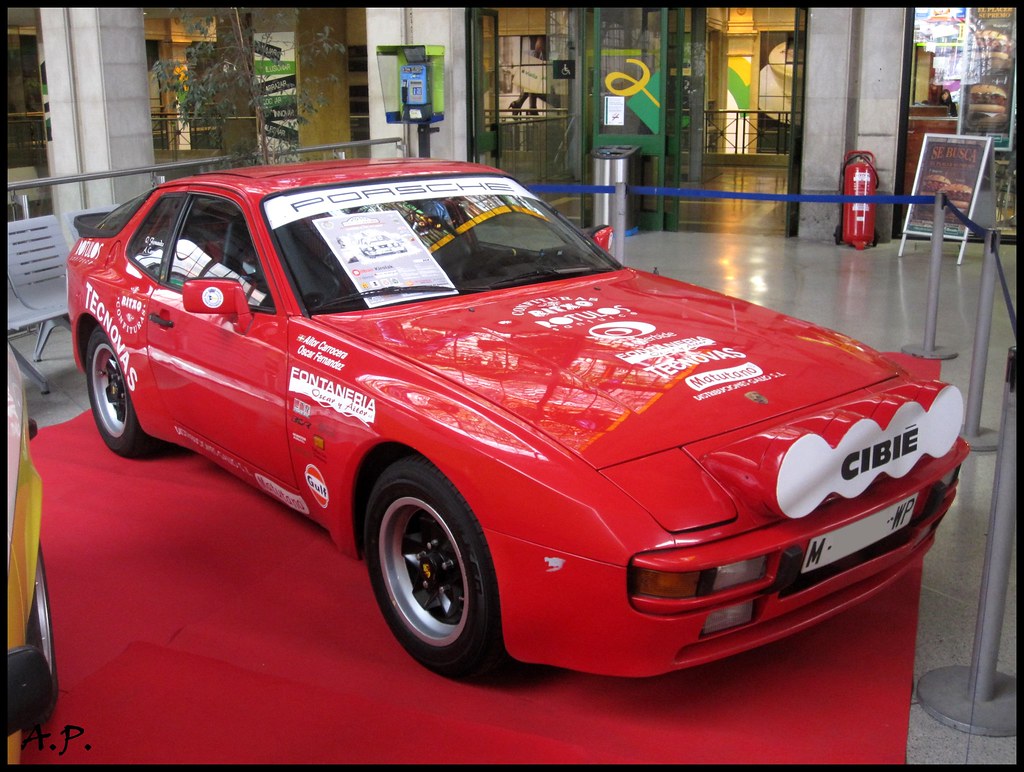
4. **Porsche 944**For many, the name Porsche immediately conjures images of the revered rear-engined 911. In this formidable shadow, the Porsche 944, produced from 1982 to 1991, often finds itself unjustly overlooked, its significant merits obscured by its more famous sibling. Yet, for those who truly understand automotive dynamics, the 944 represents a triumph of engineering, offering a fantastic and accessible balance of power, handling, and surprising everyday usability.
The 944’s genius lay in its precisely engineered front-engine, rear-wheel-drive layout, a configuration that allowed for an almost textbook-perfect 50:50 weight distribution. This meticulous balance was achieved through a sophisticated transaxle design. The result was a car that offered truly exceptional handling characteristics, renowned as one of the finest of its era, delivering a confidence-inspiring and predictable driving experience that was both engaging and immensely rewarding.
Initially powered by a robust 2.5L inline-four engine, the 944 provided ample and accessible power, later seeing significant upgrades to a more potent 3.0L unit in the S2 model and even turbocharged variants. These evolutions ensured that the car always felt eager and capable, reinforcing its legitimate credentials as a serious sports machine. The torque delivery was smooth, making for a fulfilling experience.
Despite its sophisticated chassis, ample power, and renowned Porsche build quality, the 944 consistently struggles for the same recognition as the 911. This persistent undervaluation, however, positions it as an exceptionally engaging and fundamentally underrated sports car, a true driver’s delight waiting to be rediscovered. It offers genuine Porsche performance and handling purity without the exorbitant price tag of its sibling.
Car Model Information: 1987 Porsche 944
Caption: 1986 944 Turbo (951) US-spec
Name: Porsche 944
Manufacturer: Porsche AG
Class: Sports car
Production: 1982–1991
Layout: Front-engine, rear-wheel-drive layout
Assembly: Neckarsulm,Stuttgart
Designer: Harm Lagaay
Predecessor: Porsche 924
Successor: Porsche 968
BodyStyle: coupé,convertible
Engine: Straight-four engine,Turbocharger,2.7 L M44/12 I4,3.0 L M44/41 I4
Wheelbase: 2400 mm
Abbr: on
Length: 1986–1988: {{convert,4318,mm,in,1,abbr=on
Width: 1735 mm
Height: 1275 mm
Transmission: Automatic transmission,Manual transmission
Weight: Pre-1988: {{convert,1180,kg,lb,0,abbr=on
Categories: 1990s cars, All articles needing additional references, All articles with unsourced statements, Articles needing additional references from September 2024, Articles with short description
Summary: The Porsche 944 is a sports car which was manufactured by the German company Porsche from 1982 until 1991. A front-engine, rear-wheel drive model based on the platform of the 924, the 944 was available in coupé or cabriolet body styles, with either naturally aspirated or turbocharged engines. With over 163,000 cars produced, the 944 was the most successful sports car in Porsche’s history until the introductions of the Boxster and 997 Carrera.
Extensive design revisions for the 1992 model year prompted Porsche to drop the 944 nameplate and rebrand the vehicle as the 968.
Get more information about: Porsche 944
Buying a high-performing used car >>>
Brand: Porsche Model: 944
Price: $34,999 Mileage: 79,665 mi.
Read more about: Undervalued ’80s Imports: 9 Easy-to-Maintain Restoration Gems You Need to Know About
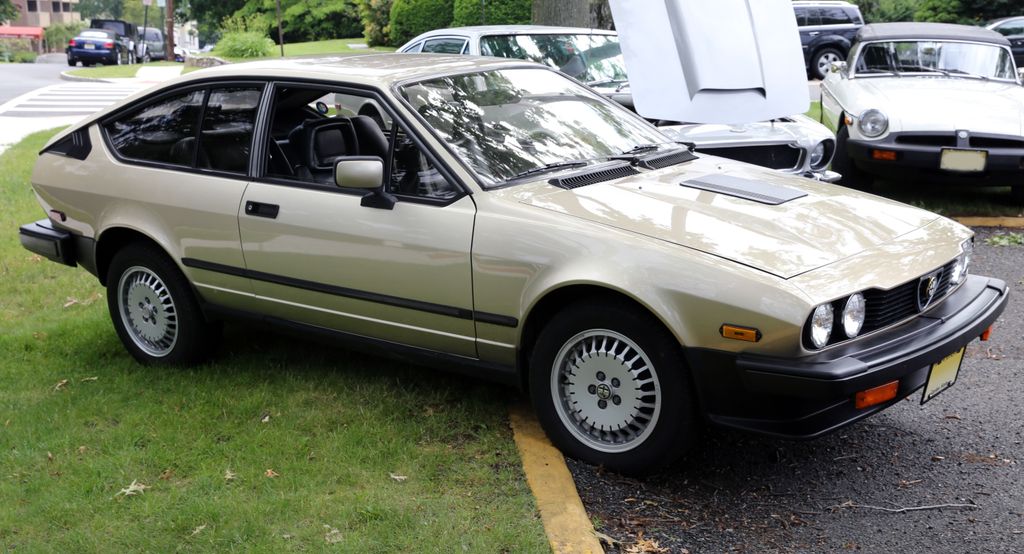
5. **Alfa Romeo GTV6**In the pantheon of classic sports cars, few marques evoke as much passion and mystique as Alfa Romeo, a brand synonymous with driving emotion and elegant design. Among its celebrated lineage, the GTV6, produced from 1980 to 1986, stands out as a genuine hidden gem, a machine that encapsulates the very essence of Italian driving exhilaration with a distinctive flair. It represents a period where Alfa Romeo’s sporting heart beat strongly.
The undeniable soul of the GTV6 was its magnificent 2.5L V6 engine, a powerplant justly famed for its deeply sonorous and utterly captivating exhaust note. This particular V6, designed by Giuseppe Busso, delivered a truly thrilling driving experience, encouraging drivers to chase every redline and revel in the accompanying auditory symphony. It was an engine that didn’t just provide power; it sang an operatic score, profoundly enhancing the emotional connection.
Complementing this glorious engine was an intelligently designed rear transaxle layout, a sophisticated engineering solution that bestowed the GTV6 with exceptional weight distribution. This meticulous arrangement, combined with a de Dion tube rear suspension, translated directly into superb handling characteristics, making the car incredibly agile and responsive on twisty roads. The GTV6 communicated clearly with its driver, inspiring confidence and encouraging spirited driving.
Despite its impressive racing pedigree, including notable success in the demanding European Touring Car Championship, the GTV6 is frequently overshadowed by other Alfa Romeo models. This relative obscurity, however, makes it an even more alluring and profoundly underrated choice for the true connoisseur. The GTV6 offers an unparalleled combination of character, a captivating soundtrack, and a genuinely rewarding driving experience that few other classics can match.
Car Model Information: 2025 Alfa Romeo Stelvio Sprint
Name: Alfa Romeo Alfetta
Caption: 1978 Alfa Romeo Alfetta GTV 2.0
Manufacturer: Alfa Romeo
Production: 1972–1987
Assembly: Arese,Rosslyn, Gauteng
BodyStyle: Sedan (automobile)
Layout: Front-engine, rear-wheel-drive layout
Related: Alfa Romeo Giulietta (116),Alfa Romeo Alfa 6,Alfa Romeo 90
Categories: 1980s cars, Alfa Romeo vehicles, Articles with short description, CS1 Dutch-language sources (nl), CS1 French-language sources (fr)
Summary: The Alfa Romeo Alfetta (Type 116) is a front-engine, five-passenger saloon and fastback coupé manufactured and marketed by Italian automaker Alfa Romeo from 1972 to 1987 with a total of over 400,000 units produced during its production run.
The Alfetta was noted for the rear position of its transaxle (clutch and transmission) and its De Dion tube rear suspension — an arrangement designed to optimize handling by balancing front/rear weight distribution, as well as maintaining a low polar moment of inertia and low center of gravity. The interior of Coupé models featured a then unusual central tachometer placement — by itself, directly in front of the driver.
The Alfetta name, which means “little Alfa” in Italian is derived from the nickname of the Alfa Romeo Alfetta (Tipo 159), a successful Formula One car which in its last iteration introduced in 1951, paired a transaxle layout to De Dion tube rear suspension — like its modern namesake.
Get more information about: Alfa Romeo Alfetta
Buying a high-performing used car >>>
Brand: Alfa Romeo Model: GTV6
Price: $54,000 Mileage: 889 mi.
Read more about: Unearthing Gems: 15 Undervalued 1980s Sports Cars That Are Smart Buys for Collectors Today
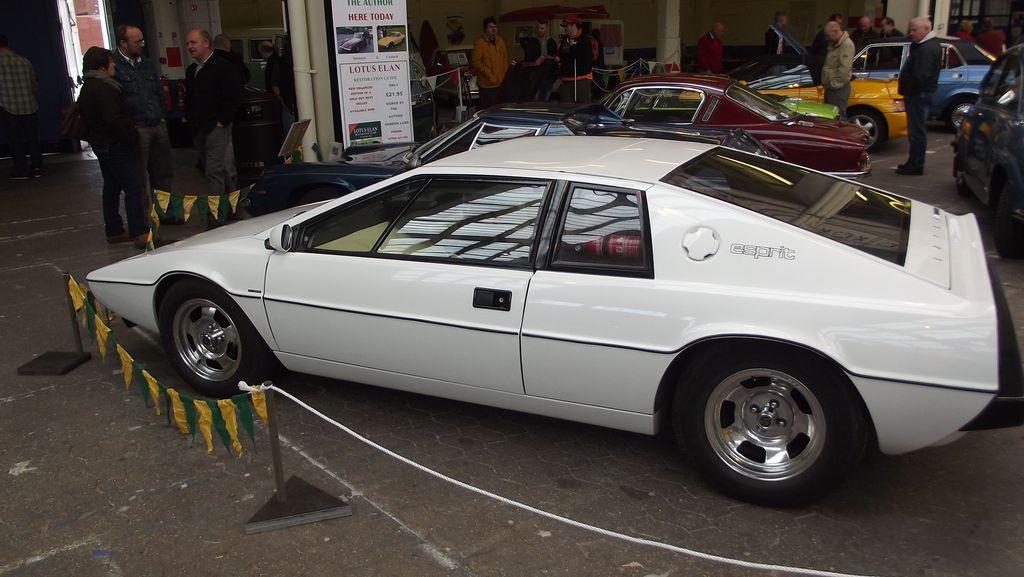
6. **Lotus Esprit S1**When the Lotus Esprit S1 burst onto the scene in 1976, it did so with a dramatic, almost otherworldly wedge-shaped design that instantly cemented its status as an icon of automotive futurism. This striking aesthetic, penned by the legendary Giorgetto Giugiaro, gave the Esprit the exotic looks of far more expensive supercars, yet Lotus managed to deliver this visual drama and impressive handling at a surprisingly attainable price point. It was a bold statement, merging high style with genuine driver focus and Colin Chapman’s philosophy of lightness.
Underneath its angular, fiberglass bodywork, the Esprit S1 was powered by a spirited 2.0L inline-four engine. While this powerplant, producing around 160 horsepower, didn’t make it the fastest machine in a straight line, outright velocity was never the primary goal for Lotus. Instead, the focus was squarely on dynamic purity, and the Esprit delivered in spades. Its meticulously engineered lightweight chassis, coupled with Lotus’s legendary suspension tuning, made it an absolute revelation when navigating challenging, twisty roads.
The steering, unassisted and direct, provided an exquisite level of feedback, allowing the driver to feel every nuance of the road surface. The car’s low center of gravity and razor-sharp turn-in made it exceptionally nimble, reacting instantaneously to driver inputs. This immersive driving experience, where the car felt like an extension of the driver, was a hallmark of Lotus engineering.
The Esprit S1’s undeniable charisma was further amplified by its memorable appearance as a submersible in the James Bond film “The Spy Who Loved Me,” securing its place in pop culture history. Despite this cinematic stardom and its profound impact on automotive design and handling, the Esprit S1 regrettably remains largely underappreciated in the broader sports car world. Its ability to communicate every nuance of the road, combined with its distinctive character and pure driving feel, makes it a true joy to drive and a testament to Chapman’s enduring legacy.
Car Model Information: 2025 Hyundai PALISADE Calligraphy Night Edition
Name: Lotus Esprit
Caption: 1999 Lotus Esprit V8
Manufacturer: Lotus Cars
Production: 1976–2004,10,675 produced
Assembly: Hethel,Norfolk,England
Class: Sports car
BodyStyle: coupé
Layout: Longitudinal engine,Rear mid-engine, rear-wheel-drive layout
Sp: uk
Predecessor: Lotus Europa
Successor: Lotus Europa S
Categories: 1980s cars, 1990s cars, 2000s cars, 24 Hours of Le Mans race cars, All Wikipedia articles written in British English
Summary: The Lotus Esprit is a sports car built by Lotus Cars from 1976 to 2004 at their Hethel, England factory. It has a rear mid-engine, rear-wheel-drive layout. Together with the Lotus Elise / Exige, it is one of Lotus’ most long-lived models.
The Esprit was among the first of the (near) straight-lined, hard-edge creased, and sometimes wedge-shaped, polygonal “folded paper” designs of the prolific, and highly successful Italian industrial and automotive designer Giorgetto Giugiaro. The Esprit’s backbone chassis was later adapted to carry the body of the DeLorean car, another low-bodied, Giugiaro-drawn, sharp-creased, wedge-shaped sportscar design. In 1978, the first updates led to the series 2 and 2.2 L (134 cu in) engined Esprit S2.2, made until the 1982–1988 Series 3 and Turbo Esprit models, that used a 1980 Giugiaro designed aerodynamic and aesthetic restyling package.
The Lotus Esprit however, lived on through the 1990s, and into the 2000s. It received its first significant restyling by designer Peter Stevens, who also did styling on the McLaren F1. Stevens gave the Esprit overall softer lines and shapes, but the car did not get a new series number – it is instead often just called the ‘Stevens Esprit’, or by its project number, the X180, made from 1988 to 1994.
In 1994, an official Series 4 Esprit, drawn by designer Julian Thomson, had a further rounded shape, especially the bumper sections and lower body of the car. Styling-wise, this became the most long-lived Esprit (1994–2004), only receiving its last changes, by Russell Carr in 2002.
Over the years, the performance of the Esprit’s 4-cylinder engine was increased from around 150 PS (148 hp; 110 kW) and just under 200 N⋅m (148 lb⋅ft) of torque, to double those power figures, mainly through greater inlet and exhaust flow, and strong turbo-charging. And from 1996, a new 3.5 L (214 cu in) V8 twin-turbo engine was added, offering 355 PS (350 hp; 261 kW). Contrary to a long list of low-volume British (sports) cars, with the 3.5 l Rover V8 engine, the Esprit received a Lotus in-house designed V8. Top speed rose from some 214 km/h (133 mph) in 1976, to over 280 km/h (174 mph) for the V8, twenty years later.
After a 28-year production run, the Esprit was one of the last cars made with pop-up headlights, together with the 5th generation Chevrolet Corvette.
Get more information about: Lotus Esprit
Buying a high-performing used car >>>
Brand: Lotus Model: Esprit S1
Price: $48,755 Mileage: 4,184 mi.
Read more about: Buckle Up, Buttercup! We’re Ranking 15 Legendary Movie Cars That Drove Straight Into Our Hearts (and Pop Culture!)

7. **Nissan 300ZX (Z31)**The Nissan 300ZX, specifically its Z31 iteration produced from 1983 to 1989, frequently finds itself in the shadow of its more curvaceous successor, the Z32. This common oversight, however, diminishes the significant achievements and groundbreaking nature of the Z31 itself. It represented a pivotal moment for Nissan’s revered Z-car lineage, blending technological innovation with genuine sporting intent in a distinctive package.
Far from being merely a transitional model, the Z31 was a thoroughly groundbreaking car for its era, boasting a suite of advanced technologies that set it apart. Key among these was its formidable turbocharged V6 engine, a sophisticated powerplant that delivered both exhilarating performance and a refined character, particularly in later 3.0-liter turbo variants. Inside, futuristic digital instrumentation and voice warnings captivated drivers, showcasing Nissan’s commitment to cutting-edge design and user experience.
With the Turbo model offering an impressive output of up to 200 horsepower and 227 lb-ft of torque, the Z31 delivered truly formidable performance for its time. Its available two-seater and 2+2 configurations, coupled with a comfortable, driver-focused cockpit, ensured it appealed to a broad spectrum of enthusiasts seeking a blend of grand touring comfort and genuine sporting prowess.
Its distinctive angular design, a hallmark of 1980s automotive aesthetics, combined with these technological innovations and robust performance, crafted a truly unique and engaging sports car. The Nissan 300ZX (Z31) is undeniably an underrated machine, a testament to forward-thinking engineering and design that deserves far more recognition. For those looking for an affordable classic Japanese sports car with character and advanced features, the Z31 is a compelling choice that offers tremendous value.
Continuing our deep dive into the automotive world’s unsung heroes, we now turn our attention to eight more distinct examples of underappreciated sports cars. These vehicles, each with their own unique blend of design innovation, compelling performance credentials, and fascinating historical contexts, deserve far more recognition than they typically receive. Prepare to explore why these machines, once relegated to the shadows, are increasingly being celebrated by those who truly understand the art of driving.
Car Model Information: 1990 Nissan 300ZX GS
Name: Nissan 300ZX
Class: Grand Tourer
Manufacturer: Nissan
Production: 1983–2000
Assembly: ubl
Aka: Nissan Fairlady Z
Layout: Front-engine, rear-wheel-drive layout
Predecessor: Nissan Fairlady Z (S130)
Successor: Nissan 350Z
Categories: 1990s cars, 2+2 coupés, All articles needing additional references, All articles with unsourced statements, Articles needing additional references from May 2021
Summary: The Nissan 300ZX is a sports car that was produced across two different generations. As with all other versions of the Z, the 300ZX was sold within the Japanese domestic market under the name Fairlady Z.
It was sold in Japan from 1983 to 2000 and in the United States from 1984 to 1996, the 300ZX name followed the numerical convention initiated with the original Z car, the Nissan Fairlady Z (S30), which was marketed in the U.S. as the 240Z. The addition of the “X” to the car’s name was a carryover from its predecessor, the 280ZX, to signify the presence of more luxury and comfort oriented features. The first generation 300ZX known as the Z31 model was produced from 1983 through 1989 and was a sales success becoming the highest volume Z-car for Nissan.
To become even more competitive in the sports car market, the second generation 300ZX was driven up-market. It was redesigned to be faster and to feature more advanced technology, but came with a higher price than its predecessor, with consecutive price increases each model year of availability. As such, sales dwindled each year, a trend in the higher end sports car market at the time, and Nissan placed a hiatus on selling new Nissan Z-Cars to the US after the 1996 model year, though the car would continue to be sold in the Japan domestic market until 2001 in low production numbers.
Car and Driver placed the Z32 on its Ten Best list for seven consecutive years, each model year of its availability in the United States. Motor Trend awarded it as the 1990 Import Car of the Year. The Nissan 350Z, officially the Z33 generation Z-Car, succeeded the 300ZX in 2003.
Get more information about: Nissan 300ZX
Buying a high-performing used car >>>
Brand: Nissan Model: 300ZX
Price: $24,597 Mileage: 21,680 mi.
Read more about: Unearthing Gems: 15 Undervalued 1980s Sports Cars That Are Smart Buys for Collectors Today
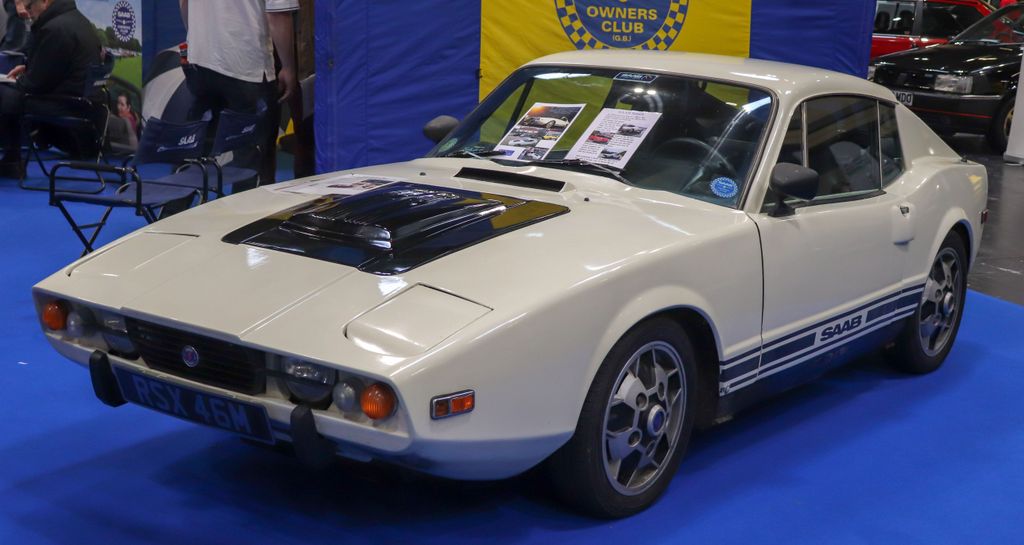
8. **Saab Sonett III**The Saab Sonett III, produced from 1970 to 1974, stands as a truly distinctive entry from Sweden, a quirky sports car that often slips from collective memory. Unlike its more conventional contemporaries, the Sonett III broke the mold with its lightweight fiberglass body and a front-wheel-drive layout, offering a nimble and engaging driving experience that was genuinely different from the status quo. It embodied Saab’s unique engineering philosophy, prioritizing distinctiveness.
At its heart, the Sonett III was powered by a compact 1.7L V4 engine. While not delivering earth-shattering horsepower, it was perfectly suited to the car’s featherlight chassis, offering decent performance and an eagerness that belied its modest displacement. This unique powerplant, coupled with the car’s sharp steering, contributed to a spirited driving character, particularly on winding country roads.
The Sonett III’s design was equally bold and unconventional, featuring striking pop-up headlights and a sleek, aerodynamic profile. This forward-thinking aesthetic, combined with its compact dimensions and inherent agility, created a visually arresting and uniquely Scandinavian sports car presence. Despite its innovative engineering and captivating character, it remains underappreciated, a testament to Saab’s audacious spirit for those seeking something truly off the beaten path.
Car Model Information: 2025 Hyundai PALISADE Calligraphy Night Edition
Caption: Sonett V4
Name: Saab Sonett
Manufacturer: Saab Automobile
BodyStyle: Roadster (automobile),coupé
Assembly: Trollhättan,Arlöv
Production: 1955–1957 (Series I),1966–1974 (Series II and III)
Related: Saab 93,Saab 96
Categories: 1960s cars, 1970s cars, All articles with unsourced statements, Articles containing Swedish-language text, Articles with short description
Summary: The Saab Sonett is an automobile manufactured by Swedish automaker Saab between 1955 and 1957 and again between 1966 and 1974. The Sonett share its engines and other mechanical components with the Saab 93, 95 and 96 of the same era. It was mainly intended for the lucrative American export market and was only offered intermittently in the Swedish domestic market for the 1968 and 1972 model years.
The first prototype, now known as the Sonett I, is a two-seat, open-top, lightweight roadster racer. Ten years later, the name was revived for the commercially distributed Sonett models II, V4, and III.
Get more information about: Saab Sonett
Buying a high-performing used car >>>
Brand: Saab Model: Sonett III
Price: $48,755 Mileage: 4,184 mi.
Read more about: 13 Underappreciated Wagons: Unearthing Automotive Utility’s Hidden Gems
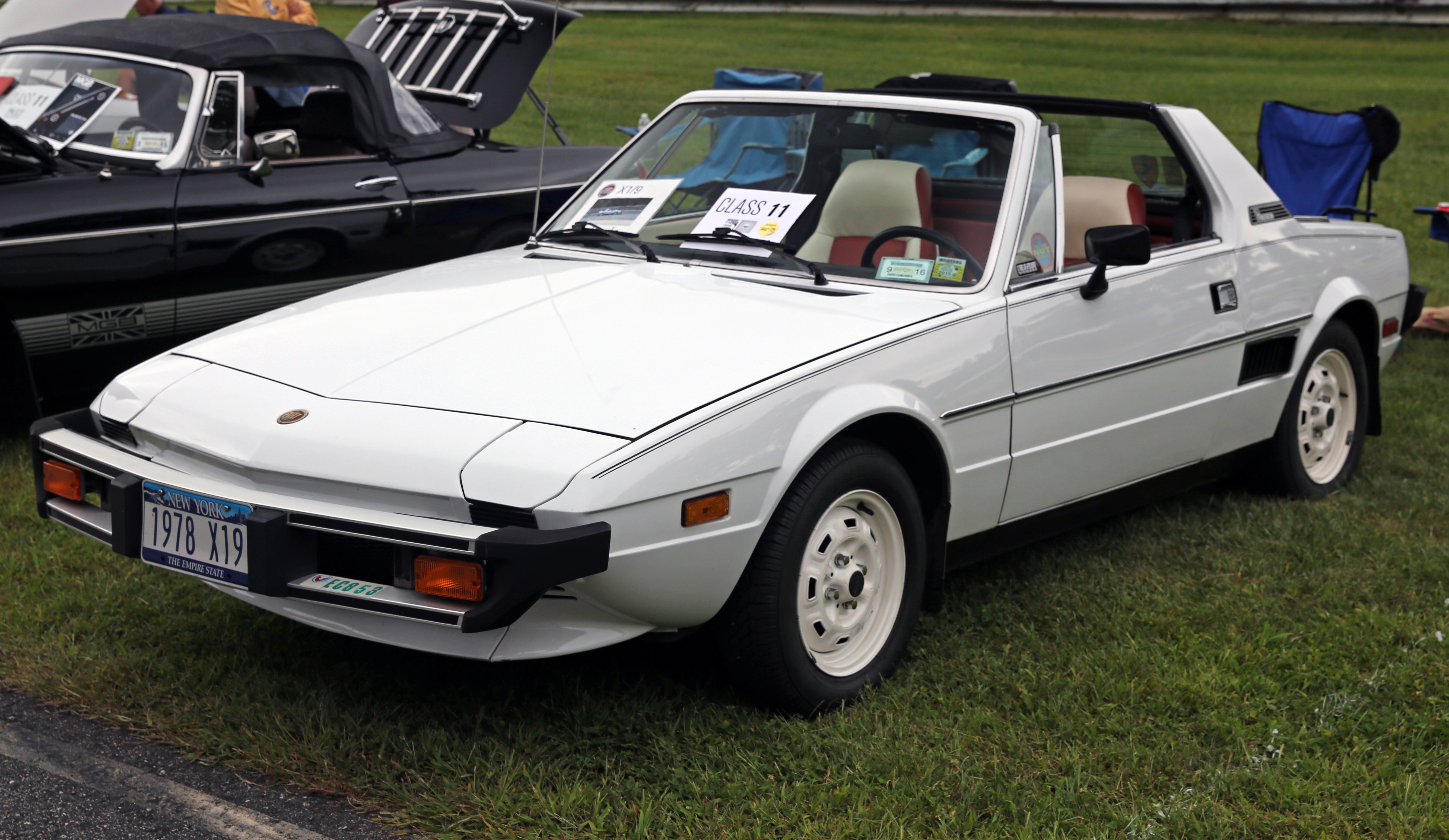
9. **Fiat X1/9**From 1972 to 1989, the Fiat X1/9 carved a special niche in the world of affordable sports cars, offering a sophisticated mid-engine, targa-topped layout typically reserved for far more exotic machinery. Designed by the renowned Bertone, this nimble Italian gem captivated with its clever packaging and exhilarating dynamics, yet it often found itself unjustly overshadowed by its more conventional European rivals.
The true brilliance of the X1/9 lay in its meticulously engineered lightweight construction and superb balance, hallmarks of its mid-engine design. This configuration provided an exceptionally low center of gravity and ideal weight distribution, translating directly into remarkably agile handling and precise steering feel. It communicated intimately with its driver, responding with eagerness to every input and inviting spirited cornering, making every drive a pure joy.
Initially powered by a 1.3L engine, later upgraded to a 1.5L unit, the X1/9 was never a straight-line powerhouse. However, its exceptional agility and direct feedback more than compensated for modest horsepower. The joy of driving an X1/9 came not from raw speed, but from the purity of its dynamics, fostering a profound connection between car and driver, cementing its status as a genuine driver’s car.
Car Model Information: 1980 FIAT X1/9
Name: Fiat X1/9
Manufacturer: Fiat
Aka: Bertone X1/9
Production: [object Object]
Assembly: Fiat,Gruppo Bertone
Designer: Marcello Gandini
Class: Sports car
BodyStyle: Targa top
Layout: Rear mid-engine, rear-wheel-drive layout
Related: Fiat 128,Fiat Ritmo
Engine: Fiat 128 SOHC engine,Fiat 128 SOHC engine
Transmission: Manual transmission
Wheelbase: cvt
Length: cvt
Width: cvt
Height: cvt
Weight: cvt
Predecessor: Fiat 850,Vignale Gamine
Successor: Fiat Barchetta
Sp: uk
Categories: 1980s cars, Articles with short description, Bertone vehicles, CS1 Italian-language sources (it), Cars introduced in 1972
Summary: The Fiat X1/9 is an Italian two-seater mid-engined sports car designed by Bertone and manufactured by Fiat from 1972–1982 and subsequently by Gruppo Bertone from 1982–1989.
With a transverse engine and gearbox in a mid-mounted, rear-wheel drive configuration, the X1/9 was noted for its balanced handling, retractable headlights, lightweight removable hardtop which could be stowed under the bonnet, front and rear storage compartments — and for being the first Fiat to have been designed from its conception to meet US safety regulations.
Get more information about: Fiat X1/9
Buying a high-performing used car >>>
Brand: Fiat Model: X1/9
Price: $28,900 Mileage: 1 mi.
Read more about: Beware: These Classic Cars Are Not Worth Restoring – An Expert Guide for Enthusiasts
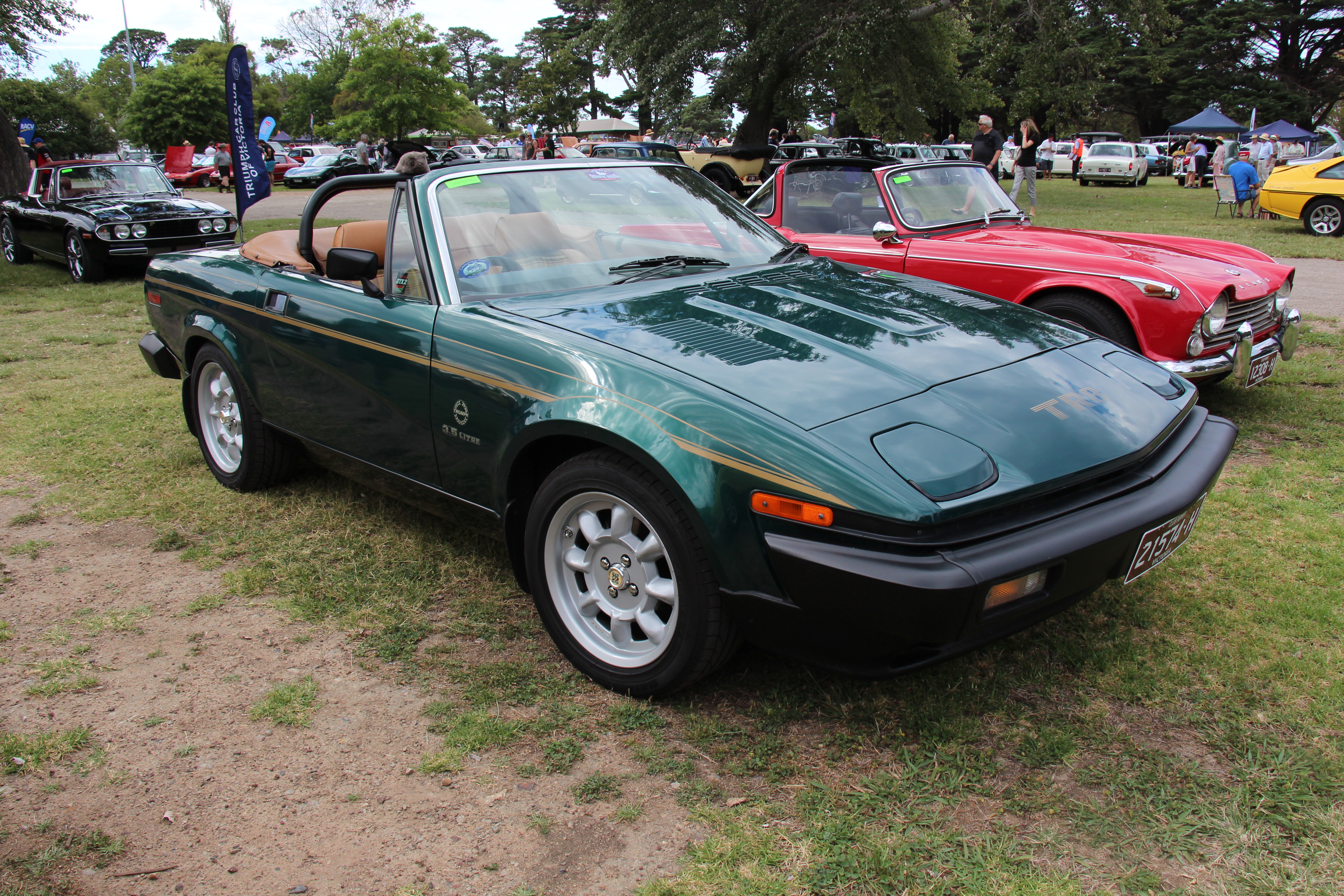
10. **Triumph TR8**Emerging from 1978 to 1981, the Triumph TR8 represents a fascinating, albeit short-lived, chapter in British sports car history. As the potent V8-powered variant of the controversial TR7, the TR8 delivered significantly elevated performance, injecting a much-needed dose of raw power and traditional British motoring character into the angular wedge design. It was a true effort to redefine Triumph’s sporting legacy.
Underneath the bonnet of the TR8 lay its defining feature: a robust 3.5L Rover V8 engine. This iconic British powerplant, capable of producing 133 horsepower, transformed the TR7’s character, propelling the TR8 with far greater authority and an addictive exhaust note. It allowed the TR8 to stand among the most powerful British sports cars of its era, appealing greatly to enthusiasts with its accessible torque and thrilling acceleration.
Beyond its engine, the TR8 also benefited from an improved chassis and suspension tuning. This ensured that, while undeniably potent, the TR8 still retained the engaging handling dynamics expected of a true sports car. Its combination of powerful V8 and traditional rear-wheel-drive delivered a visceral, old-school driving experience that remains highly sought after by discerning collectors today, a genuine hidden gem.
Read more about: Beyond the Hype: 14 Classic Cars That Haven’t Held Their Value in Today’s Market
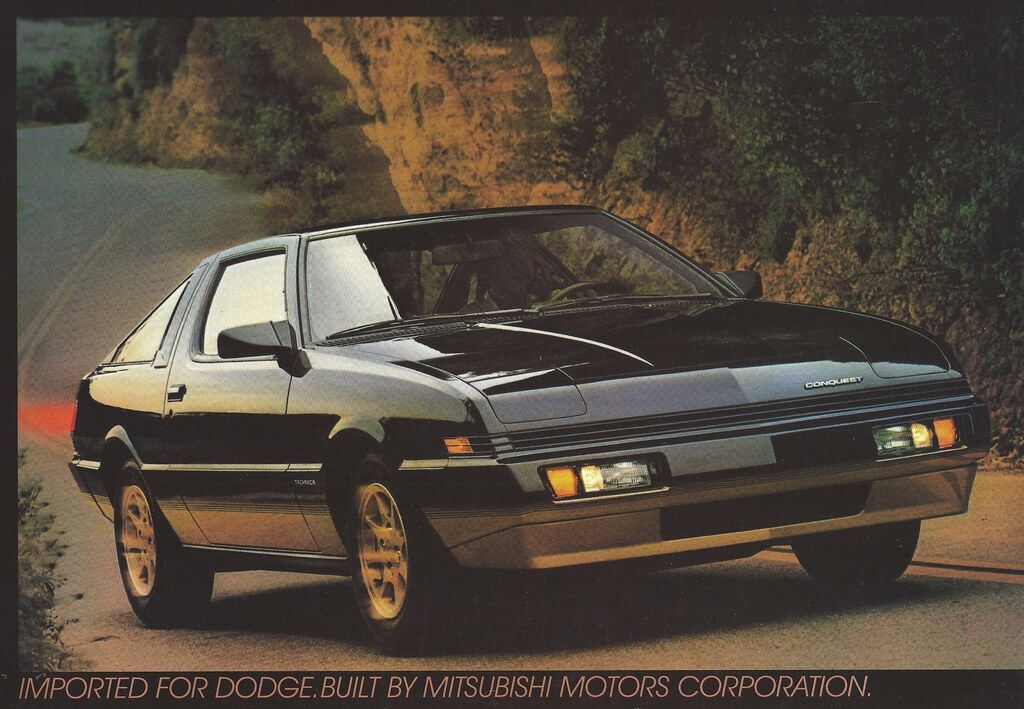
11. **Mitsubishi Starion**In the fiercely competitive landscape of 1980s performance cars, the Mitsubishi Starion, produced from 1982 to 1989, was a formidable turbocharged contender that has, in many circles, been unjustly forgotten. With its aggressive styling and advanced technology, it represented Mitsubishi’s serious foray into the global sports car market, offering a compelling blend of Japanese reliability and genuine sporting prowess.
Powering the Starion was a potent 2.6L turbocharged inline-four engine, a sophisticated unit for its time. In later models, this powerplant delivered up to 197 horsepower, providing strong, exhilarating acceleration that easily rivaled many celebrated peers. The turbo’s surge delivered a thrilling rush, cementing the Starion’s credentials as a serious performance machine, further enhanced by its rear-wheel-drive layout.
The Starion’s physical presence was equally commanding, characterized by its wide stance, flared wheel arches, and distinctive aggressive styling, a hallmark of 1980s automotive design. This bold aesthetic, combined with its focused dynamics, solidified its identity as a true driver’s car. Despite its impressive credentials, the Starion often finds itself overshadowed, but for those in the know, it’s a unique and underrated choice.
Read more about: Remember These? 14 Classic Cars From the 1980s That Everyone Forgot About
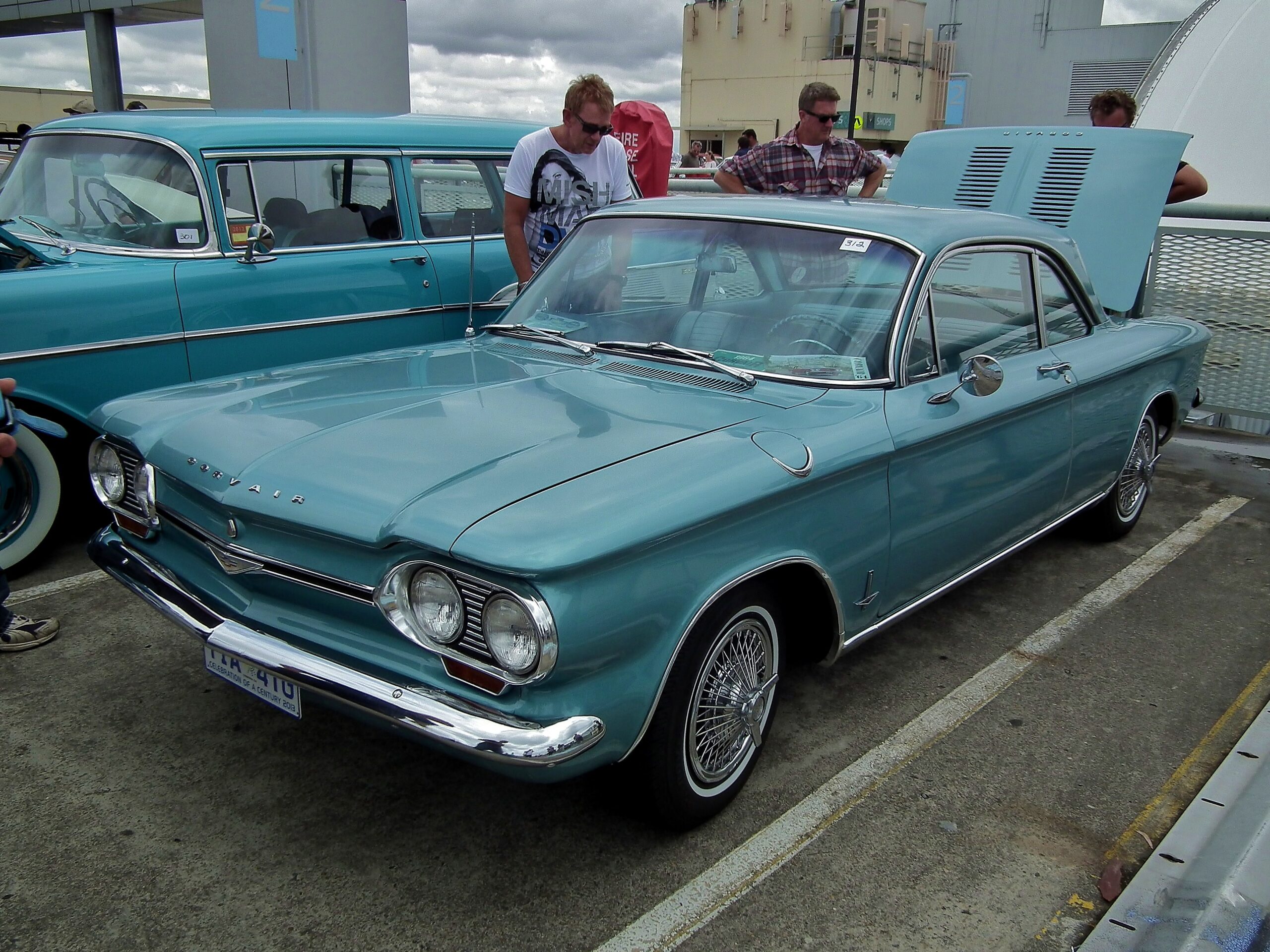
12. **Chevrolet Corvair Monza**The Chevrolet Corvair Monza, spanning from 1960 to 1969, stands as one of America’s most unconventional and historically significant sports cars. In an era dominated by front-engine, rear-wheel-drive orthodoxy in the United States, the Corvair dared to be different, adopting a sophisticated rear-engine, air-cooled layout that drew clear inspiration from European design philosophies.
At its core, the Corvair Monza utilized a flat-six engine, an engineering choice distinguishing it significantly from domestic rivals. This unique powerplant, coupled with its rear-engine configuration, contributed to a balanced driving experience, offering a surprisingly agile ride and decent power delivery. The car’s innovative engineering was a bold departure for an American mass-market vehicle, showcasing a willingness to experiment and challenge the status quo.
The Corvair Monza’s unique design and engineering set it apart, making it a standout in the U.S. market. Its lighter front end and distinct handling characteristics, while initially misunderstood, offered a different kind of driving engagement. Unfortunately, the Corvair’s innovative spirit was ultimately overshadowed by controversy, leading to its persistent underappreciation today. Yet, it remains a pioneering American attempt at a truly driver-focused, technologically distinct sports car, deserving more respect for its audacity and charm.
Car Model Information: 2025 Hyundai PALISADE Calligraphy Night Edition
Caption: 1964 Chevrolet Corvair Monza
Name: Chevrolet Corvair
Manufacturer: Chevrolet
Production: July 1959
Platform: GM Z platform
Chassis: Unibody
ModelYears: 1960–1969
Assembly: United States,Kansas City, Missouri,Oakland, California,Van Nuys,St. Louis,Flint, Michigan,Belgium,Canada,Mexico,South Africa,Switzerland,Venezuela
Class: Compact car
Successor: Chevrolet Vega
Layout: Rear-engine, rear-wheel-drive layout
Categories: All Wikipedia articles written in American English, All articles lacking in-text citations, All articles needing additional references, All articles with dead external links, All articles with specifically marked weasel-worded phrases
Summary: The Chevrolet Corvair is a rear-engined, air-cooled compact car manufactured and marketed by Chevrolet over two generations from the 1960 through 1969 model years. The Corvair was a response to the increasing popularity of small, fuel-efficient automobiles, particularly the imported Volkswagen Beetle and American-built compacts like the Rambler American and Studebaker Lark.
The first generation (1960–1964) was offered in four-door sedan, two-door coupe, convertible, and four-door station wagon configurations. A two- and four-door hardtop, as well as a convertible, were available as second-generation variants (1965–1969). The Corvair platform was also offered as a subseries known as the Corvair 95 (1961–1965), which consisted of a passenger van, commercial van, and pickup truck variant. Total production was approximately 1.8 million vehicles from 1960 until 1969.
The name “Corvair” was first applied in 1954 to a Corvette-based concept with a hardtop fastback-styled roof, part of the Motorama traveling exhibition. When applied to the production models, the “air” part referenced the engine’s cooling system.
A prominent aspect of the Corvair’s legacy derives from controversy surrounding the handling of early models equipped with rear swing axles, articulated aggressively by Ralph Nader’s Unsafe at Any Speed but tempered by a 1972 Texas A&M University safety commission report for the National Highway Traffic Safety Administration (NHTSA) which found that the 1960–1963 Corvair possessed no greater potential for loss of control in extreme situations than contemporary compacts.
To better counter popular inexpensive subcompact competitors, notably the Beetle and Japanese imports such as the Datsun 510, GM replaced the Corvair with the more conventional Chevrolet Vega in 1970.
Get more information about: Chevrolet Corvair
Buying a high-performing used car >>>
Brand: Chevrolet Model: Corvair Monza
Price: $48,755 Mileage: 4,184 mi.
Read more about: Beyond the Hype: Unpacking 15 Infamous Rides That Earned a ‘Jerk Car’ Reputation Among Enthusiasts
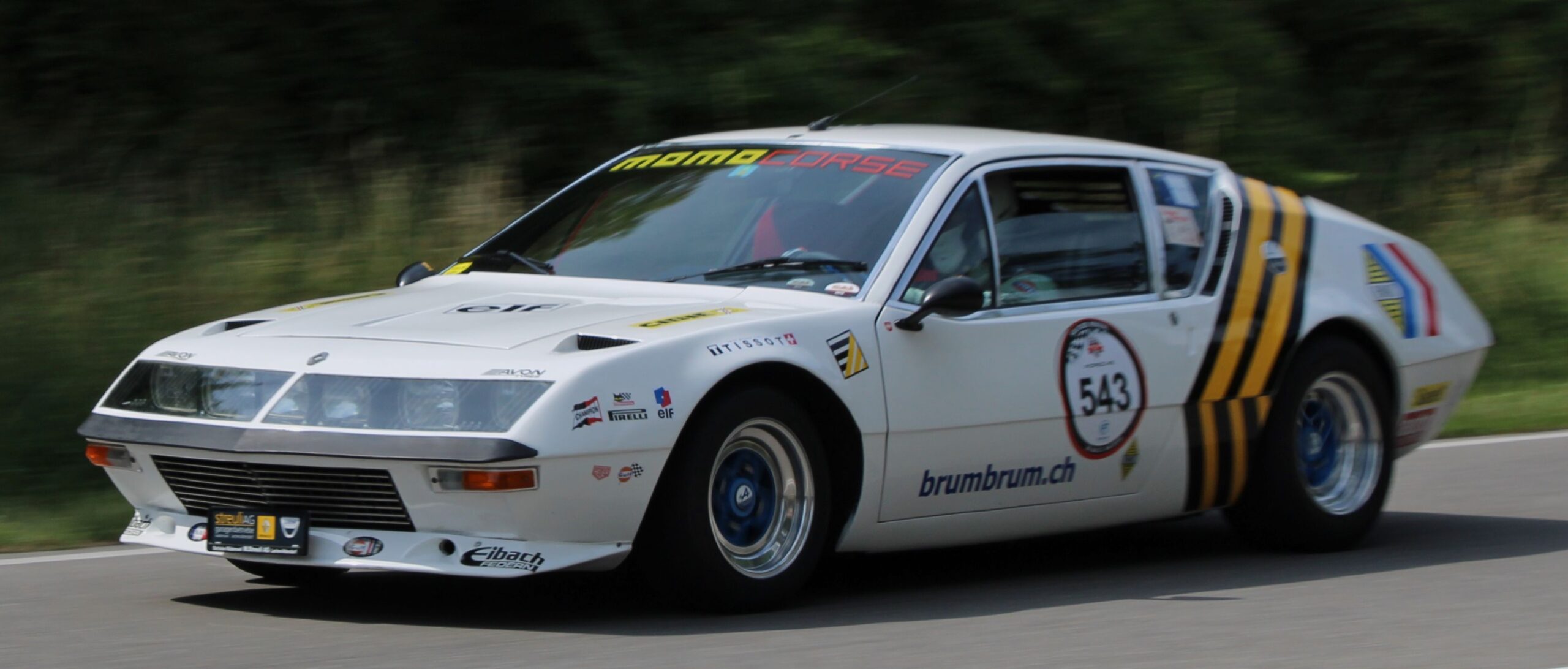
13. **Alpine A310**From 1971 to 1984, the Alpine A310 emerged from France as a striking sports car, yet it frequently finds itself overlooked in the shadow of its more famous predecessor, the iconic A110. The A310, however, was a magnificent machine in its own right, boasting distinctive wedge-shaped styling and a rear-mounted V6 engine that offered a unique blend of performance, elegant design, and undeniable European flair.
The heart of the A310’s appeal was its rear-mounted V6 engine, a configuration contributing to excellent traction and a distinctive driving feel. Paired with its meticulously engineered lightweight construction, a hallmark of Alpine vehicles, the A310 proved remarkably capable on both winding roads and circuits where Alpine built its formidable rally heritage. It was truly engineered for agility and driver connection.
The A310’s design, characterized by sharp angles and a low-slung profile, exuded a futuristic aesthetic that still turns heads today. It seamlessly blended aggressive sporting intent with a sophisticated European elegance, making it a visual statement as much as a performance machine. Despite its strong rally pedigree and captivating styling, the Alpine A310 remains regrettably underrated, presenting an intriguing proposition for those seeking a unique blend of performance, history, and engaging driving.
Read more about: Unveiling Tomorrow’s Icons: 14 Groundbreaking New Models That Exceed All Anticipation
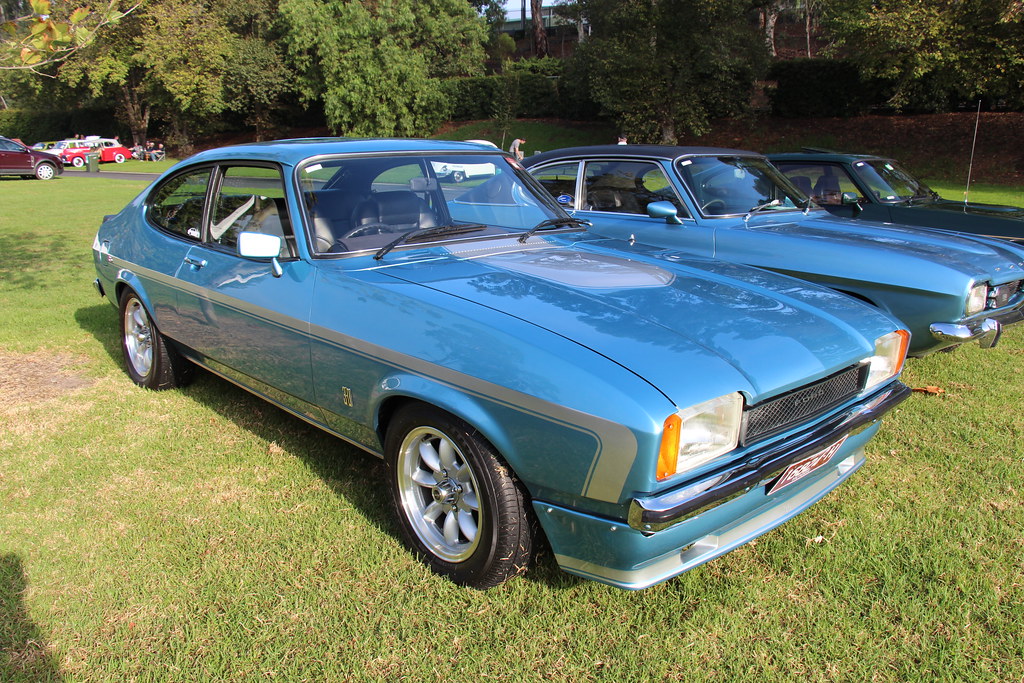
14. **Ford Capri**The Ford Capri, produced across multiple generations from 1968 to 1986, earned its affectionate moniker as the “European Mustang” for good reason. It successfully brought stylish, sporty motoring to the masses, mirroring its American counterpart’s formula with a distinct European twist. While immensely popular on its home continent, its significance is often overlooked in the broader global sports car narrative.
Available with a diverse range of engines, the Capri offered power options to suit various tastes, culminating in potent 3.0L V6 variants that delivered truly strong performance. This flexibility, combined with its accessible price point, made it a widespread hit and a beloved choice for enthusiasts across Europe, providing an exhilarating driving experience without breaking the bank and offering genuine value for money.
The Capri’s sleek design, characterized by its long hood, short deck, and muscular proportions, perfectly captured the essence of a sporty coupe. It was a car that looked fast even when standing still, and its fun-to-drive nature lived up to the visual promise. Yet, despite its widespread success and undeniable charm in Europe, the Ford Capri often remains unfairly overlooked in global discussions of classic sports cars, proving accessible performance can be truly special.
Car Model Information: 2021 Ford Mustang GT
Caption: 1978 Ford Capri Mk3 2.0L
Name: Ford Capri
Manufacturer: Ford of Europe
Production: November 1968 – December 1986
Designer: Philip T. Clark
Class: coupé
Related: Ford Cortina,Ford Taunus TC
Successor: Ford Probe,Ford Puma (sport compact)
Categories: 1960s cars, 1970s cars, 1980s cars, All Wikipedia articles written in British English, All articles with incomplete citations
Summary: The Ford Capri is a car which was built by Ford of Europe from 1968 to 1986. It is a fastback coupé and was designed by Philip T. Clark, who had been involved in the design of the Ford Mustang. It used the mechanical components from the Mk2 Ford Cortina and was intended as the European equivalent of the Ford Mustang. The Capri went on to be highly successful for Ford, selling nearly 1.9 million units in its lifetime. A wide variety of engines were used in the car throughout its production lifespan, which included V6 engines named Essex and Cologne at the top of the range, while the straight-four (Kent) and V4 (Taunus) engines were used in lower-specification models. Although the Capri was not officially replaced, the second-generation Probe was effectively its replacement after the later car’s introduction to the European market in 1994.
Get more information about: Ford Capri
Buying a high-performing used car >>>
Brand: Ford Model: Capri
Price: $34,993 Mileage: 18,085 mi.
Read more about: Rev Up Your Restoration: The Ultimate Guide to the Best Free Online Forums for Classic Car Enthusiasts

15. **Lancia Fulvia Coupe**Concluding our exploration of underappreciated sports cars, we arrive at the exquisite Lancia Fulvia Coupe, produced from 1965 to 1976. This Italian masterpiece is highly regarded by connoisseurs for its engineering excellence and elegant design, yet it stubbornly remains underrated in the broader automotive community, often failing to receive the widespread recognition it so truly deserves as a classic. It’s a vehicle that exemplifies Lancia’s commitment to sophisticated, driver-centric engineering.
At the heart of the Fulvia Coupe’s dynamic prowess was its innovative narrow-angle V4 engine, a distinctive Lancia hallmark, paired with a sophisticated front-wheel-drive layout. This unique combination, far from being a compromise, actually provided exceptional handling characteristics, particularly in demanding conditions. Its engineering brilliance was vividly demonstrated through significant success in international rallying, where the Fulvia carved out a formidable reputation for its agility and robustness.
The Fulvia Coupe’s design, a creation of Piero Castagnero, is an exercise in understated elegance and functional beauty. Its clean lines, delicate proportions, and exquisitely detailed interior exude a timeless Italian sophistication that captivates with every glance. It’s a car that prioritizes driver engagement and tactile feedback, offering a refined yet spirited driving experience that is uniquely Lancia, a true blend of luxury and sport. Despite its proven racing pedigree and timeless aesthetic, the Lancia Fulvia Coupe still struggles for mainstream recognition, but for those who appreciate subtle brilliance, it offers profound satisfaction.
Car Model Information: 2025 Hyundai PALISADE Calligraphy Night Edition
Name: Lancia Fulvia
Caption: Series II Lancia Fulvia Berlina
Manufacturer: Lancia
Production: 1963–1976
Designer: Ercole Spada
Class: Compact executive car
BodyStyle: Sedan (automobile)
Layout: Front-engine, front-wheel-drive layout
Engine: Petrol engine,Lancia V4 engine,1,199 cc Lancia V4,1,216 cc Lancia V4,1,231 cc Lancia V4,1,298 cc Lancia V4,1,584 cc Lancia V4
Transmission: manual transmission
Wheelbase: 2480 mm
Abbr: on (Sport)
Length: 4110 mm
Width: 1555 mm
Height: 1400 mm
Predecessor: Lancia Appia
Successor: Lancia Beta,Lancia Trevi
Sp: uk
Categories: 1970s cars, Articles with short description, CS1: unfit URL, CS1 Dutch-language sources (nl), CS1 French-language sources (fr)
Summary: The Lancia Fulvia (Tipo 818) is a car produced by Lancia between 1963 and 1976. Named after Via Fulvia, the Roman road leading from Tortona to Turin, it was introduced at the Geneva Motor Show in 1963 and manufactured in three variants: Berlina 4-door saloon, 2-door Coupé, and Sport, an alternative fastback coupé designed and built by Zagato on the Coupé floorpan.
Fulvias are noted for their role in motorsport history, including a 1972 win of the International Rally Championship. Road & Track described the Fulvia as “a precision motorcar, an engineering tour de force”.
Total production number of the Fulvia berlina was 192,097 cars, of the Fulvia Coupé 139,797 cars, and of the Fulvia Sport 7,102 cars.
Get more information about: Lancia Fulvia
Buying a high-performing used car >>>
Brand: Lancia Model: Fulvia Coupe
Price: $48,755 Mileage: 4,184 mi.
Read more about: 13 Underappreciated Wagons: Unearthing Automotive Utility’s Hidden Gems
The journey through these 15 underappreciated sports cars illuminates a significant truth in the automotive world: true value isn’t always found in the spotlight or through raw metrics alone. It resides in the character, the engineering integrity, the driving experience, and the unique stories these machines tell. Each car we’ve explored, from the nimble rotary to the V8-powered sleeper, stands as a testament to the diverse ingenuity and passion that defines sports car manufacturing across decades and continents. They remind us that the most rewarding drives often come from unexpected places, offering a connection between driver and machine that transcends mere transportation. As the automotive landscape continues to evolve, embracing electrification and automation, the distinct charm of these analog heroes will only grow more precious. They serve as a powerful reminder that an engaging driving experience, a car with a soul, will always hold a revered place in the heart of any true enthusiast. So, as you ponder your next automotive adventure, consider looking beyond the obvious; you might just uncover your own underappreciated gem, a machine that offers profound satisfaction and a driving experience truly its own. What kind of character will *you* be looking for in your next vehicle?



